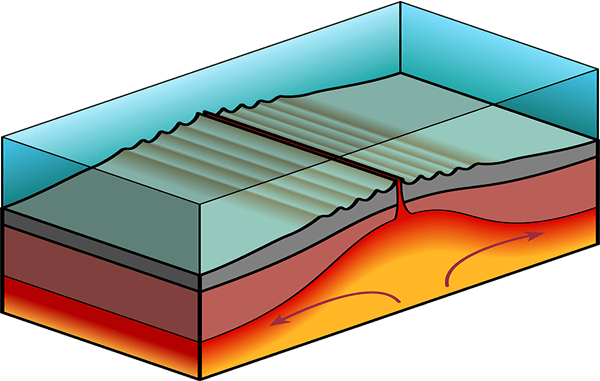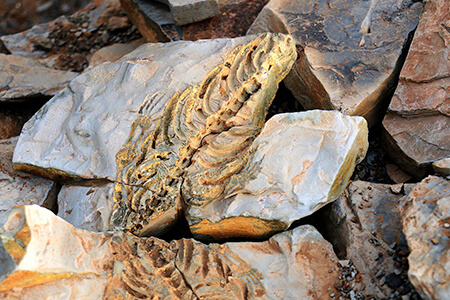This is a lesson summary. The full lesson can be viewed by purchasing an online course subscription.
Learning Objective
In this lesson we will learn about the development of the theory of plate tectonics.
Learning Outcomes
By the end of this lesson you will be able to:
- Describe Wegener’s theory of continental drift and evidence that supports it.
- Describe the mid-ocean ridge system and ocean trenches.
- Describe Hess’s theory of seafloor spreading and evidence that supports it.
- Describe the theory of plate tectonics and the geological processes and formations that it provides an explanation for.
- Describe Earth’s tectonic plates and compare different explanations for the forces driving tectonic processes.

(Image: Zern Liew, Adobe Stock)
Lesson Summary
- The theory of continental drift (1912-15) proposed that Earth’s continents were once joined in a single supercontinent which subsequently split apart and spread out across Earth’s surface.
- Evidence supporting continental drift included:
- Earth’s continents appear to fit together like pieces of a jigsaw puzzle.
- Fossils of the same species of plants and animals are found on continents separated by vast oceans and the distribution of these fossils lines up when continents are reassembled into Pangaea.
- The composition and structure of rocks and sediments shows alignment between separate continents.
- The theory of continental drift received little initial support as it lacked a viable mechanism to explain how continents could break up and move.
- The mid-ocean ridge system is a network of underwater mountain ranges offset by rifts, which extends along the middle of the world’s oceans.
- Ocean trenches are deep underwater valleys found along the coasts of some continents and adjacent to volcanic island chains.
- The theory of seafloor spreading (1960-62) proposed that new crust is formed at mid-ocean ridges, then moves outwards in opposite directions, before sinking back below Earth’s surface at ocean trenches. Hess also proposed that convection currents within Earth’s mantle were the force behind seafloor spreading and continental drift.
- Evidence supporting seafloor spreading included:
- Symmetrical patterns in the magnetic properties of rocks running parallel to mid-ocean ridges, known as magnetic striping, suggest that Earth’s magnetic field has changed in intensity and direction over time and rocks that are different distances from mid-ocean ridges are different ages and preserve different records of Earth’s magnetic field.
- Radiometric dating of rocks showed that rocks closer to mid-ocean ridges are younger than rocks that are further away, and that rocks the same distance either side of mid-ocean ridges are the same age.
- Dating of rocks also showed that oceanic rocks are much younger than continental rocks, supporting the idea of an upper age limit for oceanic rocks due to subduction.
- The thickness of ocean sediments increases with distance from mid-ocean ridges, suggesting that older rocks have had more time to accumulate sediments.
- The theory of plate tectonics (1965-67) states that Earth’s lithosphere is divided into fragments, known as tectonic plates, which move independently over the underlying asthenosphere.
- This theory is a culmination of the theories of continental drift and seafloor spreading, but also explains other geological processes, such as earthquakes, volcanoes and mountain formation.
- This theory is now widely accepted, but there is still debate about the relative roles of mantle convection and gravity in driving tectonic plate movement.

Mesosaurus fossils are found on the African and South American continents, suggesting these two continents were once joined as it would have been impossible for these reptiles to swim between them.
(Image: Osvaldocangaspadilla, Wikimedia Commons)
(Header image: Graphithèque, Adobe Stock)
